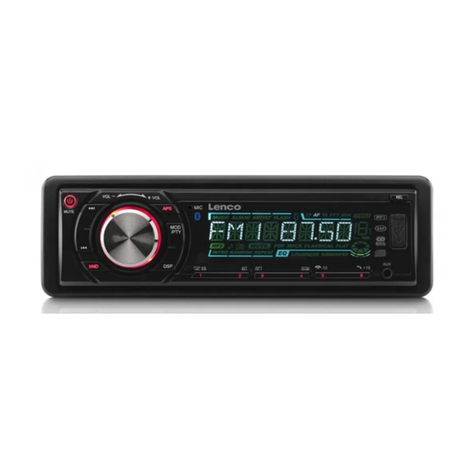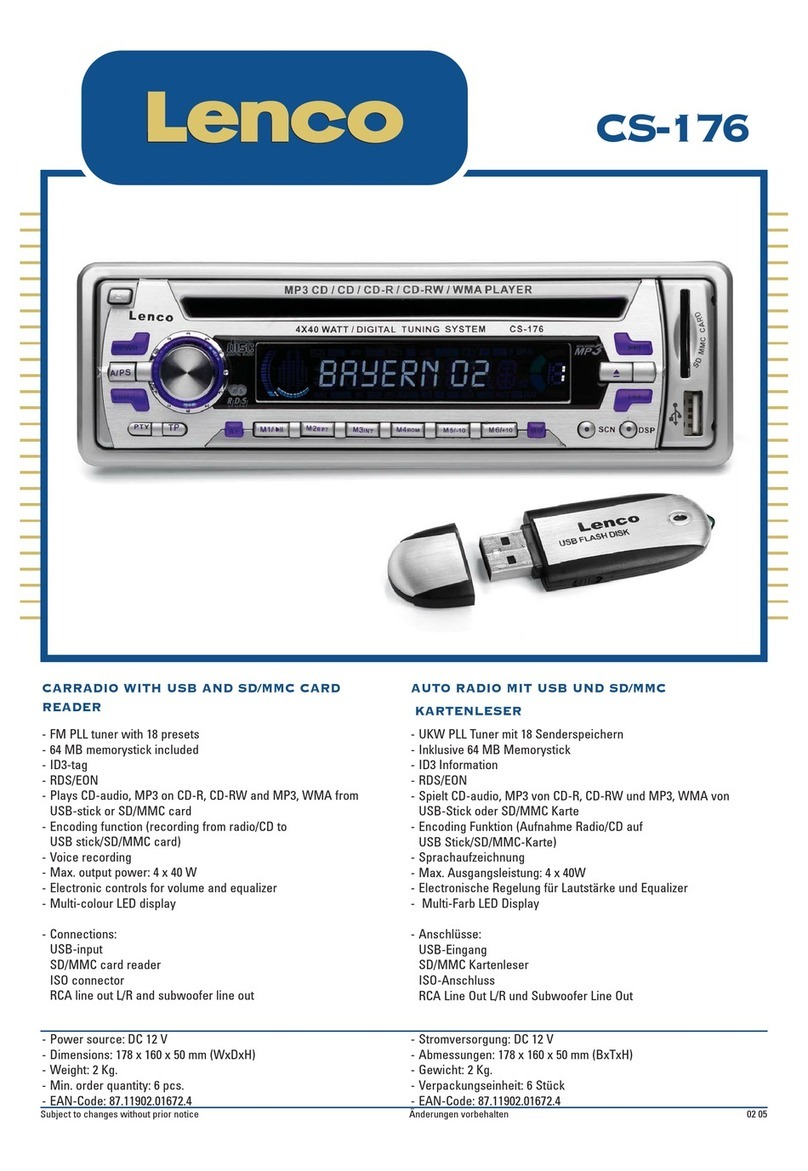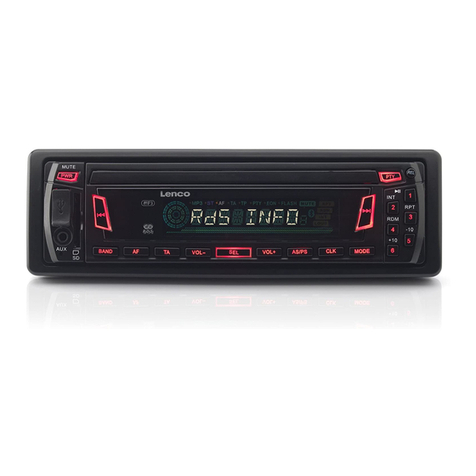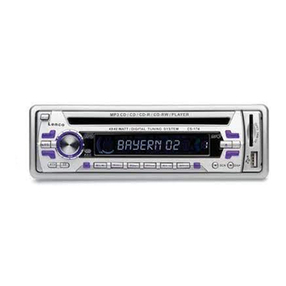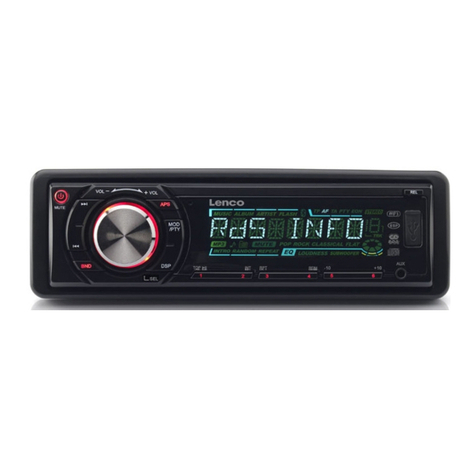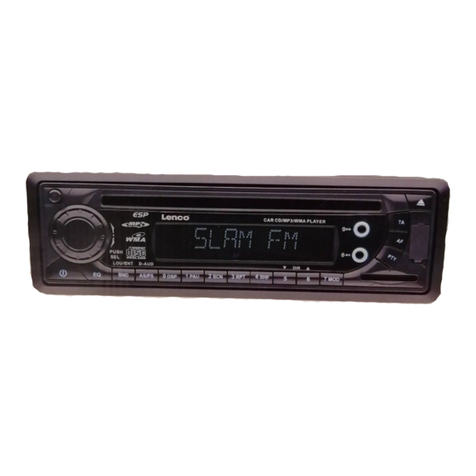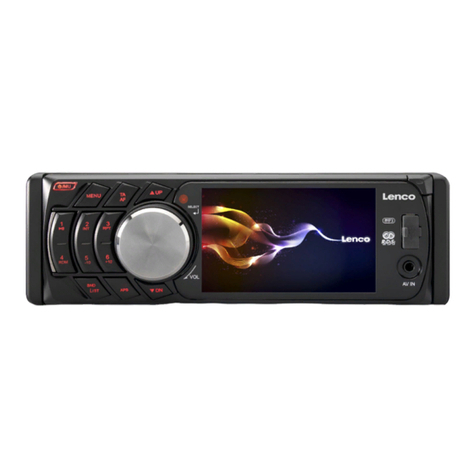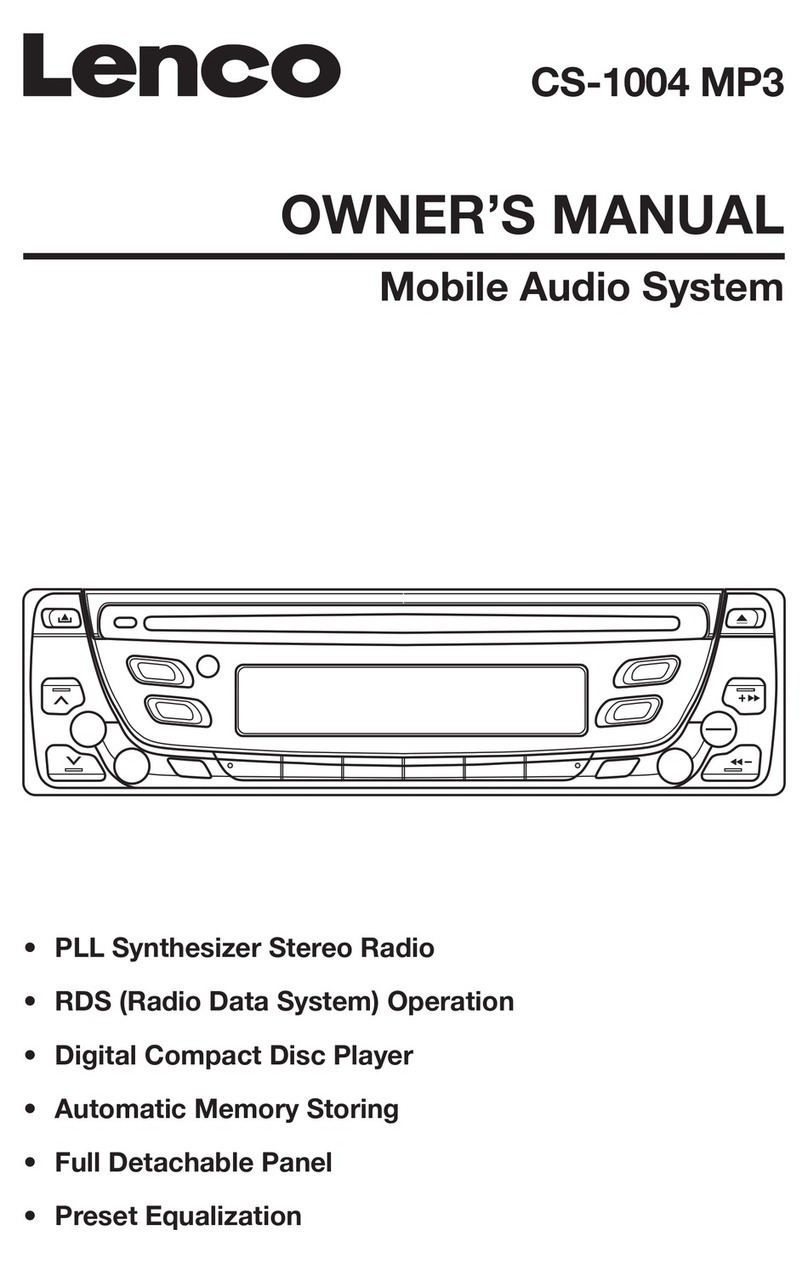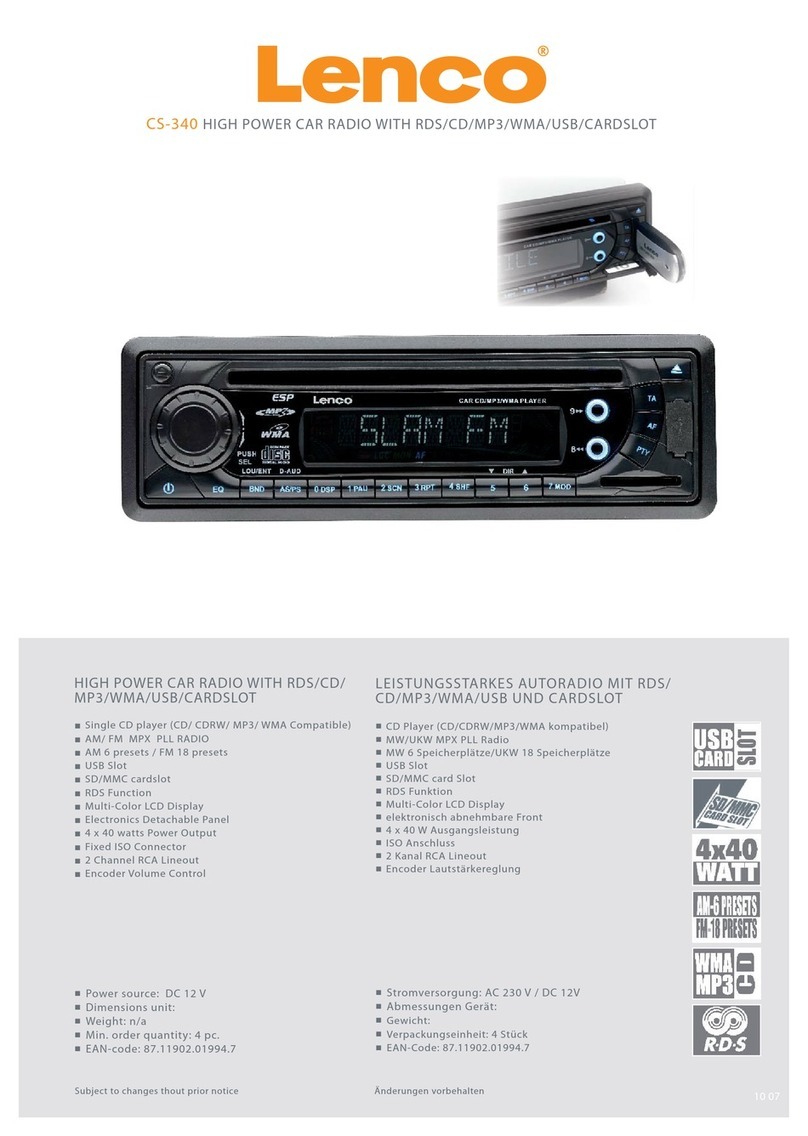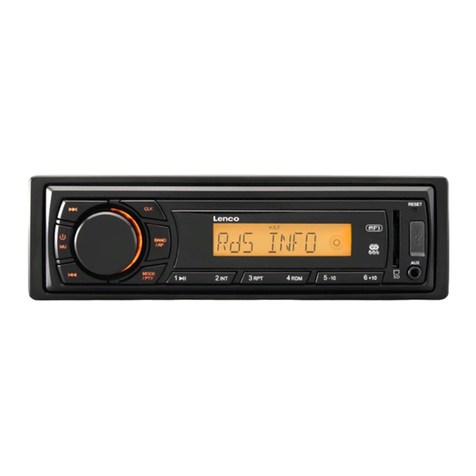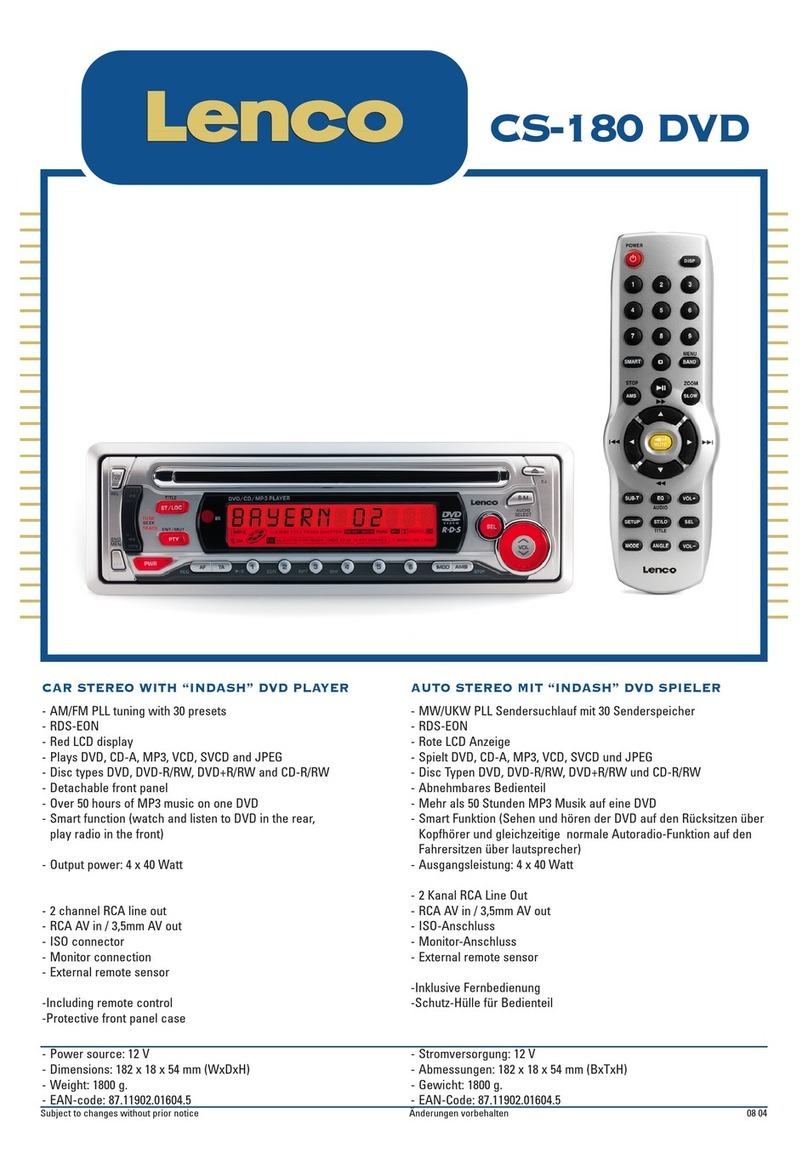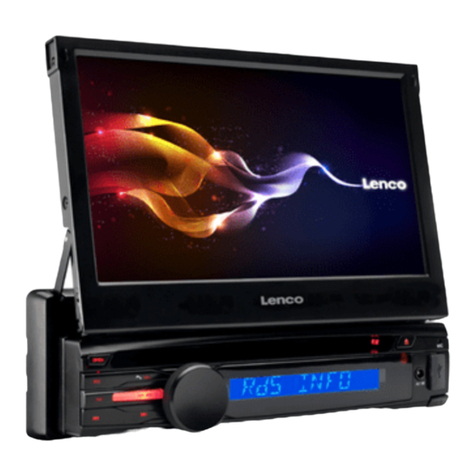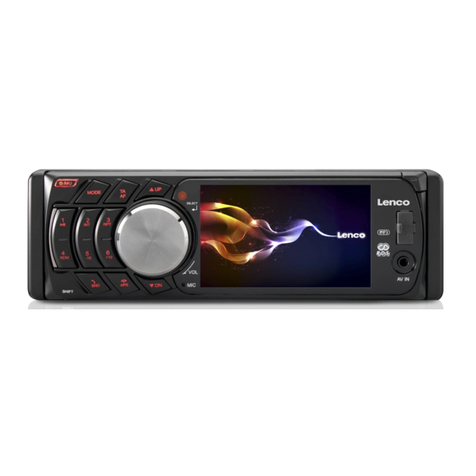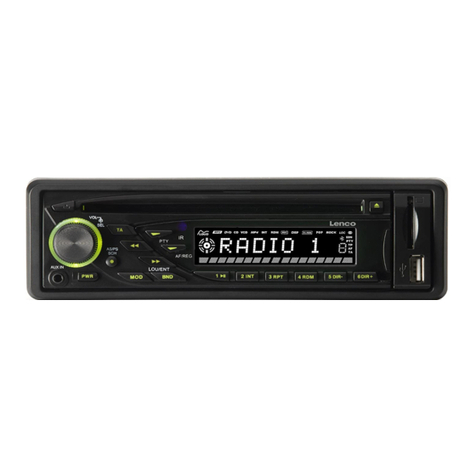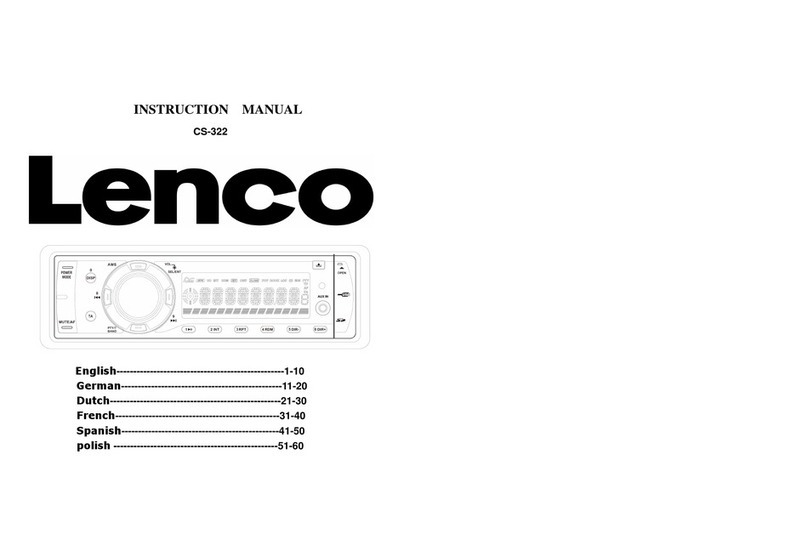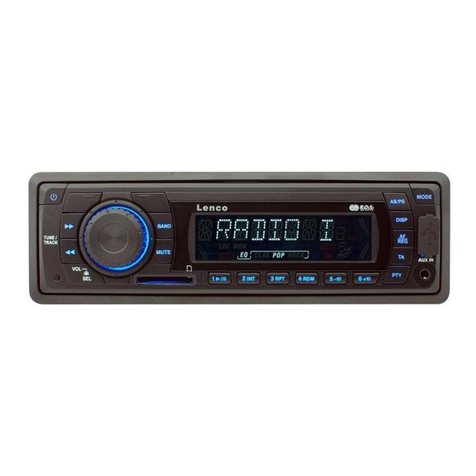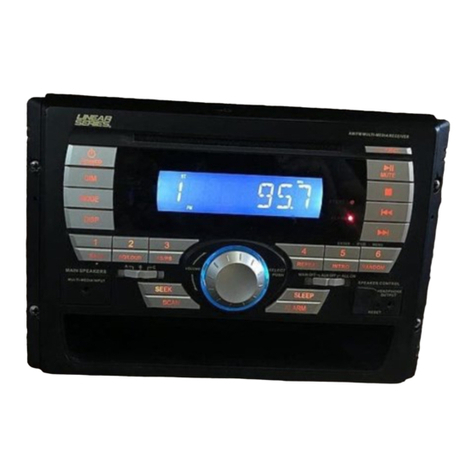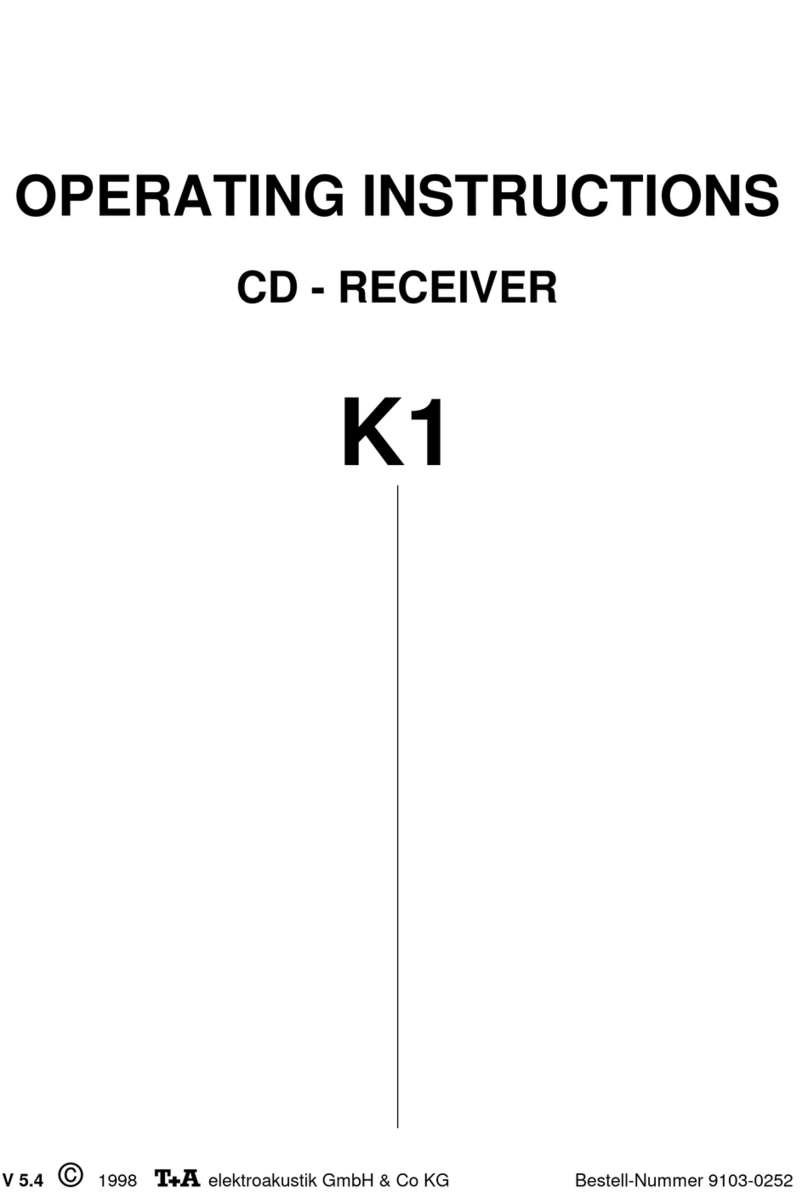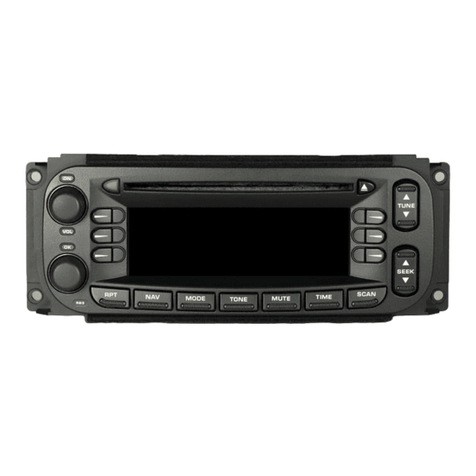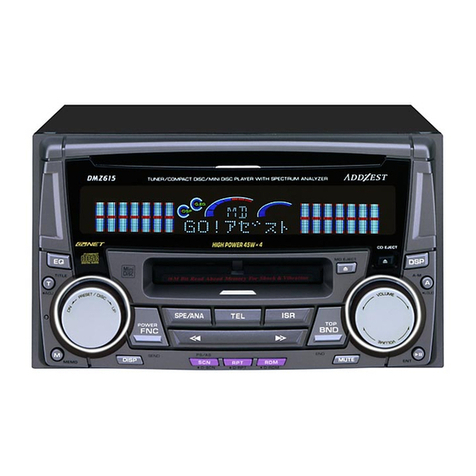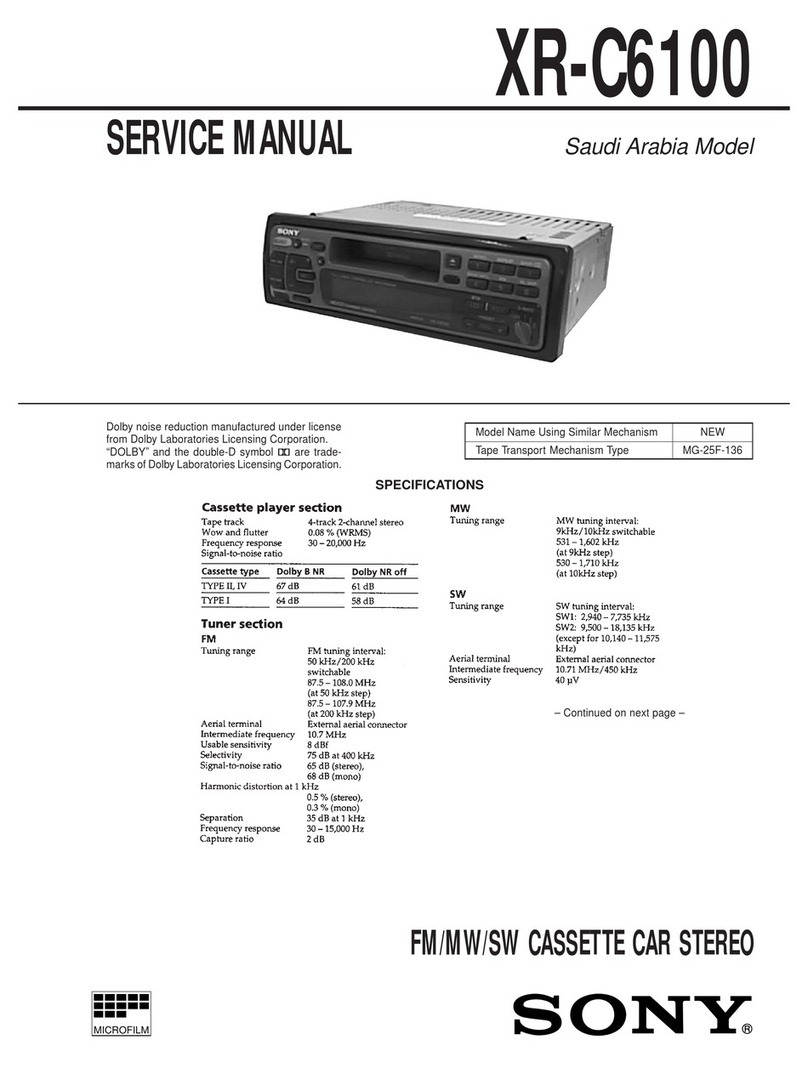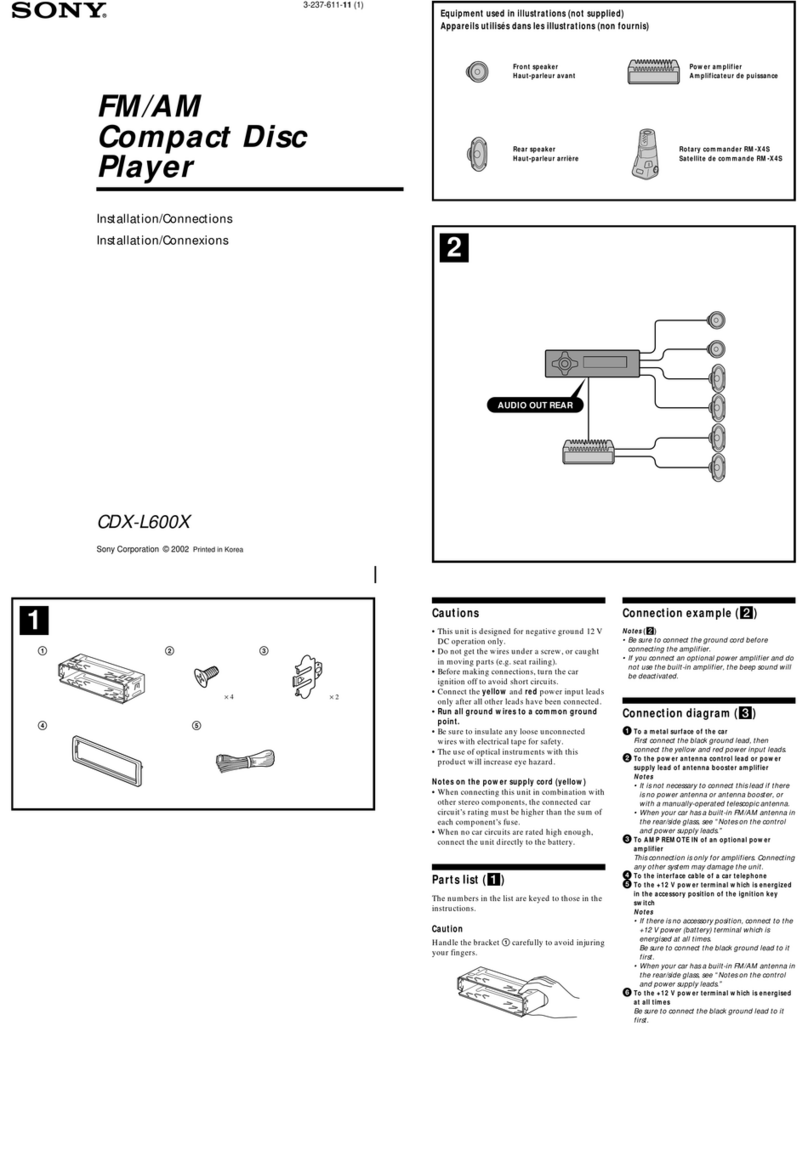
8
OPERATION
a) TA SEEK or TA ALARM
- TA SEEK mode:
When newly tuned station does
not receive TP information for
several seconds, the radio
retunes to next station which has
not the same station (PI) as the
last station, but has the TP
information.
When TP information gets lost at
the current station for retune time
which is set by RETUNE SHORT
(30 sec.) or RETUNE LONG (90
sec.), the radio start to retune to
next same PI station.
When same PI station does not
catch in 1 cyclic search, the radio
retunes to next station with TP
information.
- TA ALARM mode:
When this mode is selected, any
automatic retune mode is not
activated.
Only double beep sound (ALARM)
is output.
When newly tuned station does
not have TP information for
several seconds, beeps come
out.
When TP information gets lost at
the current station for retune time,
the beep sound is out-putted.
When newly tuned station has not
RDS signal, “PI SEEK”is
suppressed somewhat.
b) PI SOUND or PI MUTE
While AF switching is implemented
in C201 station, AF can switch to
100 MHz, which is non genuine AF
(where, different PI with same AF) in
short “DIP”.
If a car cruises that critical area back
and forth, an oscillation
phenomenon can be occurred,
because the different PI code can
be received from 100 MHz with
“XXX”PI.
The car radio has special procedure
to reduce even this kind of
unavoidable situation however there
is a limit to be escaped from this
serious case perfectly.
In that serious case, 2 mode is
selectable as follows:
- PI SOUND mode:
When above different PI sound
(DIP) is heard once in a while, the
DIP’s sound will be heard for a
short time.
- PI MUTE mode:
Under above same situation, a
mute sound will be heard for a
short time.
c) RETUNE L, RETUNE S mode
The initial time of automatic TA
search or PI search mode is
selected.
When PI information is not caught
for retune time, the radio start to
retune to next same PI station.
When same PI station does not
catch 1 cyclic search, the radio
goes to last station and waits for
several minutes until PI code is
received.
- RETUNE L mode:
Selected as 90 seconds.
- RETUNE S mode:
Selected as 30 seconds.
d) MASK DPI or MASK ALL mode
The AF frequency (which has
different PI or NO RDS signal with
high field strength) is masked during
checking PI when the unit searches
AF. The unit doesn’t search this AF
(DIP) for few minutes. In the case
of the AF of NO RDS signal with
100 90
98
100
PI : C201 PI : XXX
